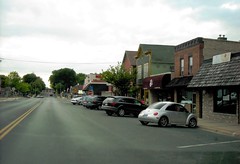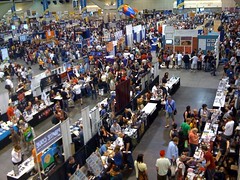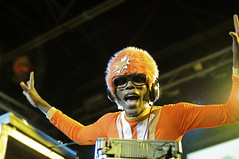
On Wednesday night, President Obama, a devoted Christian, will address his largely Christian nation on health care reform. The question before Congress and the American people comes down to: 'Should the United States adopt a 'public option' (government run) health care system or attempt to reform the current private system by negotiating policy changes with the massive insurance corporations.
.
While serving as Vice-President under Bill Clinton, Al Gore had a simple method of making policy choices. He asked himself, 'What would Jesus do?' Some ridiculed his approach by saying that Jesus was neither a politician nor wanted anything to do with the Roman Empire. While true, his critics missed the point. Vice-President Gore was not imagining Jesus as a political leader. Rather, he was trying to form an ethical basis for his policy positions based on his Christian principles of compassion, love, sacrifice and forgiveness.
.
Indeed, it is entirely possible to gauge what Jesus of Nazareth would do on the subject of health care by assessing his reputed words and actions in the New Testament gospels. Of the three Synoptic Gospels (Matthew, Mark and Luke), Mark is considered the oldest and the primary source for the other two. As the gospel of Matthew, however, has been used to quintessentially define the life of Jesus of Nazareth for two thousand years, it will be used in the subsequent analysis.
.
Jesus of Nazareth - Teacher, Preacher and Health Care Provider
.
After a few cursory chapters touching on his virgin birth and his youth, the fourth chapter of Matthew begins to chronicle his early ministry and relates the story of Jesus summoning James and John away from their fishing expedition to serve a more important cause. Jesus was on the verge of a considerable ancient world tour to feed the hungry and most importantly - heal the sick.
.
While regaling crowds in Galilee with talk about God and heaven, Matthew records Jesus 'healing all kinds of sickness and all kinds of disease among the people' (Matthew 4:23). After performing these compassionate miracles, word began to spread over long distances about a man able to conquer illness. Throngs of Syrians, who had heard the incredible news, were waiting for Jesus upon arrival to ask for his curative powers. In only a few short weeks, this new young doctor attracted a patient case-load that would make any physician today envious.
.
Then, Jesus revolutionized medical ethics. At that time, lepers were outcasts and considered 'unclean' by most of the religious establishment. They were isolated and considered half-human by even some of the otherwise most caring people. Consider the following episode from Matthew 8:2-3, 'And behold, a leper came and worshiped them, saying "Lord, if you are willing, you can make me clean". Then Jesus put out His hand and touched him, saying, "I am willing; be cleansed!" Immediately his leprosy was cleansed.' Rather than viewing the leper as part of an untouchable class, Jesus defied the social order. Was a leper worthy of the same treatment as a man of accomplishment and stature in the community? The religious establishment was becoming suspicious if not wholly outraged. In their collective view, leprosy was a sign of God's disfavor and possibly a punishment for leading a sinful life. How could they deserve the same medical attention as a 'righteous' person?
.
The 30-something doctor was just warming up. At the home of Peter, Jesus administered to Peter's mother-in-law and ended her fever. Then, Jesus found Matthew at the tax office (he was a tax collector) and courted him to join his crusade. While joining Matthew along with his professional colleagues and a few others considered beyond redemption by the religious establishment, Jesus was asked why he would willingly lower himself by breaking bread with the dregs of society. He is said to have replied, 'Those who are well have no need of a physician, but those who are sick.' (Matthew 9:12) Rather than the rich, the powerful and those considered righteous, Jesus devoted himself to the poor, the powerless and the sinful. In the less fortunate, he found more humility, more charity and more sincerity than with those in the upper classes, and he devoted his entire ministry to improving their lot.
.
In asking 'What Would Jesus Do', a grounded interpretation of
what Jesus did must first be answered honestly and without bias from his words and works. As a doctor, Jesus based his health care system upon the people most in need. Instead of towing the line and working only with 'acceptable' members of society, Jesus worked from the bottom-up. Hence, a health care system inspired by Jesus would first and foremost be designed to aid the 50 million Americans without any health insurance and the tens of millions more without adequate coverage.
.
From his 'health-care' ministry, it is possible to answer some other core questions on the what a sound Christian health-care system would look like.
.
What would Jesus do about pre-existing conditions? .
This is logically quite easy to extrapolate. Among the religious establishment in Jesus' day, sin
was considered a
pre-existing condition. Thus, lepers, tax collectors and other social outcasts were denied coverage. Jesus, however, neither made class distinctions nor faulted people for their shortcomings. According to Jesus, he had come for the very purpose to aid those with the severest '
pre-existing conditions' (sin). Hence, it can be deduced that Jesus would never allow anyone to be denied health care based on past medical problems.
.
Would a Jesus-inspired health care system have a deductible?.
After a careful evaluation of his ministry and medical career, one can arrive at a logical conclusion here as well. Of course, many of the sick were ready to pay lip service to Jesus in order to receive treatment, and Jesus was probably able to judge the sincere man or woman from the sycophant. Nevertheless, he never denied anyone help and never made treatment conditional (i.e. asking the person to become a follower or a contributor to his mission in some fashion). In short, Jesus would make health care universal and accessible to everyone. As a $250 deductible is beyond the means of poor and lower-class Americans, Jesus would certainly not entertain the prospect of leaving them out. As the very first line in The Sermon on the Mount reads, 'Blessed are the poor, for theirs is the kingdom of heaven' (Matthew 5:3), any health care system based on Christian ethics would have to account for the meek and the humble first.
.
What would Jesus think about for-profit health care?.
While insurance companies rake in hundreds of millions of dollars of profit each and every year - lining the pockets of their shareholders - nearly one out of every three Americans live with either no health care or inadequate coverage. Considering Jesus never charged a dime for his services, never turned anyone away and once said 'It is easier for a camel to go through the eye of a needle than for a rich man to enter the kingdom of God' (Matthew 19:24), Jesus would unquestionably condemn the insurance companies as 'broods of vipers' for profiting off the misfortunes of others. Indeed, this is the inherent 'sin' of the American health care system.
.
What Should Christians Do?
.
Christians can only support the current private health care system through specious reasoning. A true Christian simply cannot defend a system that denies medical coverage to the impecunious and those with
pre-existing conditions - the very people Jesus and all of his followers both past and present are called to serve. Moreover, Christians must uncompromisingly reject a for-profit private system
. Health care is big business in America, and the bottom line of corporate health care providers is profit - not people. They have enriched themselves at the expense of the meek, the infirm and the helpless for decades, and there is nothing Christian about man exploiting man. For as Jesus said in Matthew 19:19, 'You shall love your neighbor as yourself.' According to him, this was the second greatest commandment after loving god, and one cannot love his neighbor and make money off his misfortune at the same time. Whether shareholder, CEO or health care patient, we are all Americans and all neighbors from Maine to California.
.
The United States is the only Western nation to not have a single-payer, non-profit health care system run by the government. Europe seems to have the proper understanding of Jesus' ministry and mission. Unlike the United States, the poor, the sick and the aged of Europe are neither neglected nor considered a burden. Health care is considered a right instead of a privilege. Some Christians will continue to decry government expansion and scream 'We can't afford it!' However, if the United States can afford to wage a $2 trillion war in Iraq and Afghanistan for seven years (a war that Jesus would have opposed), then America can afford to take care of its own citizens at home. America needs a Jesus-inspired health care system now - a system designed to help the most vulnerable people in society without pre-conditions or profit.
.
The ethical principles of a Christian health care system are available to any reader of Jesus' words and deeds. The question now is: How much longer will a sizable number of American Christians oppose his teachings?
.
(Picture - A rendition of Jesus healing a blind man)
.
J Roquen












































